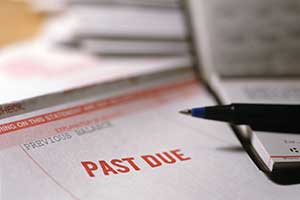
If you are having problems managing your household debt, you are not alone. November 2017 statistics from the Federal Reserve Bank of New York showed that household debt rose by $116 billion, or 0.9%, to $12.96 trillion in the third quarter of the year. The most rapid increase in debt was seen in credit-card debt, which rose by 3.1%. Other gainers were mortgage, student and auto debt.
Increasing debt is a big problem, but there are answers. The skilled and seasoned Ohio bankruptcy attorneys at Fesenmyer Cousino Weinzimmer understand that even the most well-intentioned people can find themselves in a financial hole. We offer a free consultation to evaluate your financial situation. Call one of our conveniently located office branches at 614-228-4435 (Columbus), 937-222-7472 (Dayton), or 877-654-5297 (Cincinnati) or email for your free consultation so we can determine what debt relief solutions will work best for you.
Areas of Worry
In Ohio, the economy has been slowly improving, but wages remain low. Weekly wages in Ohio in 2017 are $70 under the national average, and credit scores are lower as well. There has been a multi-decade loss of manufacturing jobs, and workers have been moving out of the state. Credit card debt and student and auto loans have grown rapidly in recent years, with auto loans increasing for 26 straight quarters. We rank 12th among states for per capita bankruptcy filings.
Here’s a look at the areas that create most household debt problems:
1) Credit Cards
There has been an upturn in seriously delinquent credit card debt, with 4.6% being 90 days or more delinquent. Some people carry balances each month on multiple credit cards or pay just the minimum amount due, so interest charges of annual rates of 20% or more compounded monthly keep mounting up. The result: debt increases and may become unaffordable.
2) Student Loans
The cost of higher education is rising, and with it debt from student loans. The Fed report shows that 9.6% of student loan debt is delinquent nationally, with about half of those loans currently being in deferment, grace periods or forbearance. Ohioans owe slightly more than the national average, ranking 9th among the states, and 67 percent of the state’s college graduates have debt. Lack of grants and student jobs to help with costs while in school make the situation worse.
3) Auto Loans
Subprime auto loan performance is deteriorating, with a delinquency rate for auto finance companies growing by more than 2 percentage points since 2014. About 2.4% of auto loan debt is seriously delinquent.
4) Mortgage Debt
Ohio housing prices are lower than those in most of the nation, so mortgage debt is one of the few bright spots, with falling delinquency rates. In Ohio, 2.2 percent of mortgages were 60 days or more late in mid-2016, down from 13.6 percent a year earlier. Nationwide, 2.3 percent of mortgage loans were more than 60 days delinquent in June 2016, declining 18 percent from 2015.
Still, a survey by GOBankingRates.com shows the top source of debt for people in Ohio is mortgage debt, with an average of $125,359 in mortgage debt at the end of the first half of 2016.
How Bankruptcy Can Help
If you are in a situation where household debt has become unmanageable, bankruptcy, a legal way to have many debts forgiven and provide a fresh financial start, may be your best option. The most common types are Chapter 7 and Chapter 13.
* Chapter 7 bankruptcy can discharge (eliminate) most or all consumer and/or business debts so they no longer have to be paid. Chapter 7 bankruptcy is over in a few months, so you can begin rebuilding credit quickly. You might have to sell property to help pay off creditors, but there are Ohio bankruptcy exemptions that cannot be sold, including clothing, cars, equipment used for work (like tools) and household furnishings. If you do not own a great deal of property, your possessions may all be exempt, qualifying you for a “no asset” case.
* Chapter 13 bankruptcy allows you to repay some or all of your debt affordably over a three- to five-year period. If you successfully complete the court-approved payment plan, the debts covered by the plan are discharged, and you may get to keep assets such as your house and car.
While many kinds of debt are discharged through bankruptcy, be aware that unless it would be an undue hardship for you to repay them, you would still be responsible for student loans.
Contact Us and Get Help
If you find yourself drowning in any kind of debt, take the first step toward debt relief and CONTACT US TODAY FOR A FREE INITIAL CONSULTATION.
During your consultation at Fesenmyer Cousino Weinzimmer, we will evaluate your entire financial situation and determine the best fit for your particular circumstances. We will make sure you are aware of all your options and help you decide on the path to a brighter future that makes sense in your individual case. We know the courts and the system and will walk you through the process every step of the way.
Delaying can only worsen your situation, so call the Ohio bankruptcy attorneys at Fesenmyer Cousino Weinzimmer today. Call one of our conveniently located office branches at 614-228-4435 (Columbus), 937-222-7472 (Dayton), or 877-654-5297 (Cincinnati) or email for your free consultation so we can determine what debt relief solutions will work best for you.


